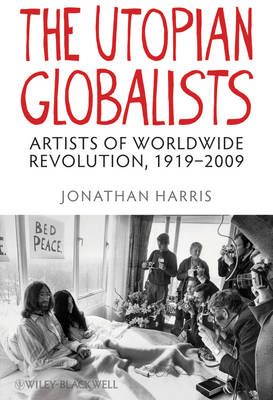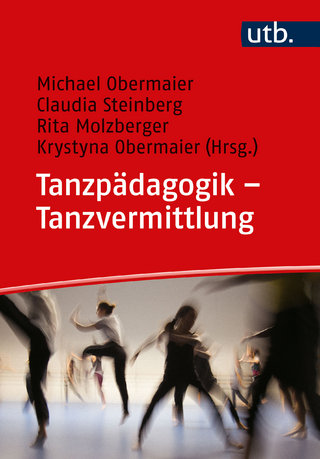
Globalized Art
Wiley-Blackwell (an imprint of John Wiley & Sons Ltd) (Verlag)
978-1-4051-9300-9 (ISBN)
"Globalized Art", offers a first-ever sustained and coherent history of the subject in twentieth century art in Europe and North America. Through analyses of a series of key examples - artists, artefacts and what he calls 'globalist moments' - Harris make the case that globalization didn't just 'happen' to art as a recent occurrence. "Globalized Art" examines a potpourri of key modernist producers and artworks from the first six decades of the twentieth century to later postmodernist artists and artefacts from c 1970-2006. Beginning with Vladmir Tatlin's attempt to combine painting, sculpture and architecture in his "Monument" in 1917, the volume traces 'globalizing impulses' through a variety of artists, media, and historical periods - Picacco's overtly political canvasses of the inter-war and Cold War periods; Joeseph Beuys utopian objects and actions; Guy DuBord's "Spectacle"; pop art 'happenings'; Christo's 'wrapped' projects of the mid-l970s-l990s; and the contemporary and commercial initiatives of the Tate Modern at the dawn of a most globalized 21st century.
"Globalizing Art" demonstrates that the varying and evolving 'globalist' appeals that key artists and artworks have made to publics, values and futures over the last hundred years define globalization far more deeply and thoroughly than ever imagined. Not a mere construct of contemporary life and parlance, it is a long-standing pre-occupation that has played a determining role in what we understand to be Western art history.
Jonathan Harris is Professor in the Department of Architecture at University of Liverpool, where he teaches are history and modern culture. He has published widely on contemporary art history and theory, and is a successful textbook author. His books include The New Art History: A Critical Introduction (Routledge, 2001, reprinted four times and published now in Korean and Chinese editions). Art History: The Key Concepts (Routledge, 2006). He is under contract with Blackwell to edit an ambitious edited text, GLOABLIZATION AND ART, which will be published in 2010.
Introduction.Chapter 1: Globalism as Utopian Universalism (1917-23): Tatlin, Constantin Brancusi, Robert Rauschenberg, Dan Flavin, Carl Andre, Sol LeWitt, and Robert Smithson, Constructivism, Marxism, "dynamism' 'techtonics, the legacies of craft romanticism and bourgeois individualism in the context of a radical modernising/internationalising political and cultural order after the Communist Revolution.Chapter 2: Globalism as Comintern 'One-worldism' (1945-1951): Picacco, the interwar period to Cold War in Europe. The rise of fascism, Bueys, form, formalism, the virtual co-emergence of American Abstract Expressionism.Chapter 3: Globalism as Unity of Being and Body Regained (1960s-early 1970s): Joseph Beuys's Utopian Objects and Actions, the Fluxus movement, new forms, materials, palces and processes of production. Sculpture and art, DeBord and the power of the spectacle, Yoko Ono, "happenings," art world "producers," Wall of Barrels, Iron Curtain..Chapter 4: Globalism as Purged Form (1975-95): Christo, Jeanne-Claude, the building-wrapping projects of the l970s-1990s, Pont Neuf Wrapped (1975-85) and Wrapped Reichstag (1995), hybrid events/installations/artefacts/documentary processes, photography, the emergence of "globalization theory" as an academic idiom, links to Tate commissions.Chapter 5: Globalism, Activism and Worldly Knowledge (1970-1997) sculpture/painting artefacts, installation, performance, exapansion of the use of photographic methods in fine art/interventionist art practices, British photo-text artists (e.g. Peter Dunn, Lorraine Leeson and Peter Kennard), conventional political artists (e.g. Martha Rosler Barbara Kruger). Other producers with interests in documenting 'globalist' themes-- Jeff Wall, Andreas Gursky, Fred Wilson and Douglas Hueblar,.Chapter 6: Contemporary Globalism (2000-2006) the Tate Modern Unilever Series, world art "unbound," Rachael Whiteread Olafur Eliasson and Anish Kapoor, Doris Salcedo - artefacts, images and experiences of transcendence, sublimity, multivalence, and warnings about the fragility of the world's ecology in the contemporary period. Definitions of, and challenges posed by contemporary embodiments of so-called globalized art. The scale, ambition, technological complexity and cost as artefacts as globalizing totalities. Art or not? Spectacle redux? 'Capital as image'? The relationship between these works, their commissioning agency, and the now global art world (and art world business)..Conclusion.The conclusion will review the findings of the study as whole, and comment on the concepts and methods of analysis necessary now and in the future for understanding contemporary art made around the world under globalised conditions.
| Erscheint lt. Verlag | 20.4.2018 |
|---|---|
| Verlagsort | Chicester |
| Sprache | englisch |
| Themenwelt | Kunst / Musik / Theater ► Theater / Ballett |
| Sachbuch/Ratgeber ► Sport ► Tanzen / Tanzsport | |
| ISBN-10 | 1-4051-9300-X / 140519300X |
| ISBN-13 | 978-1-4051-9300-9 / 9781405193009 |
| Zustand | Neuware |
| Haben Sie eine Frage zum Produkt? |
aus dem Bereich


